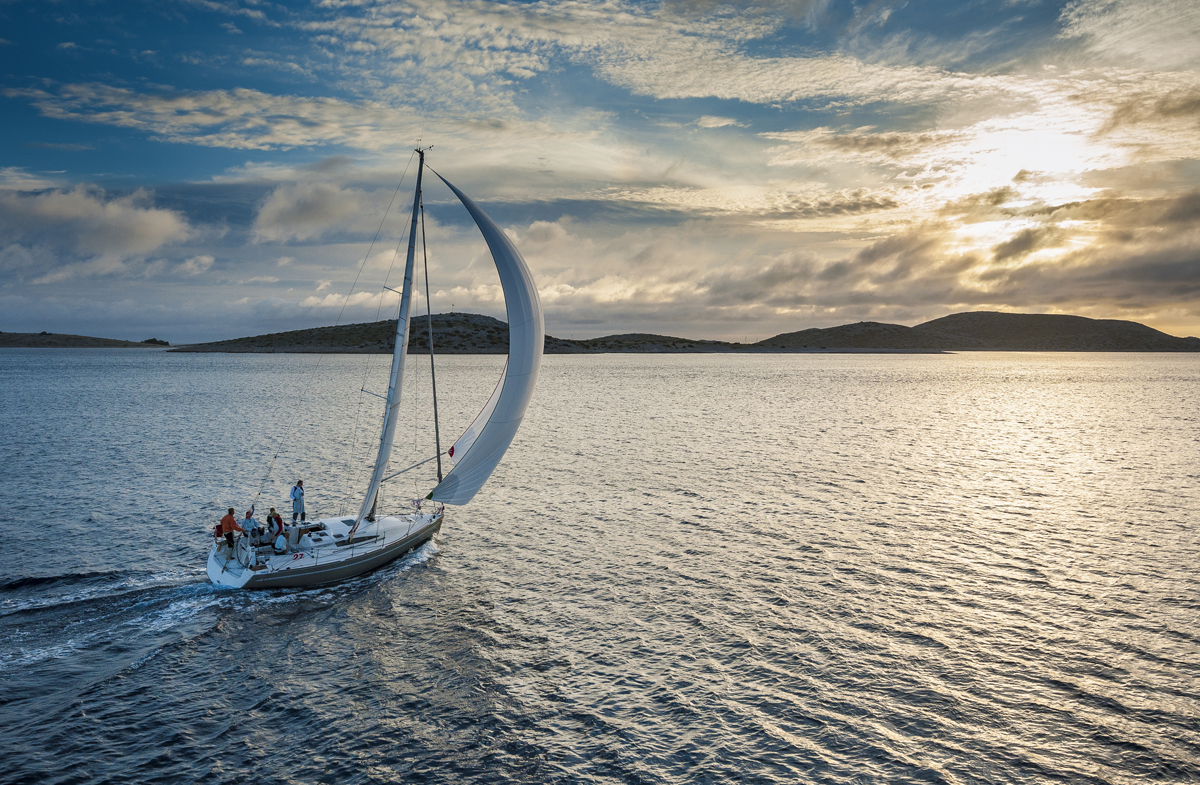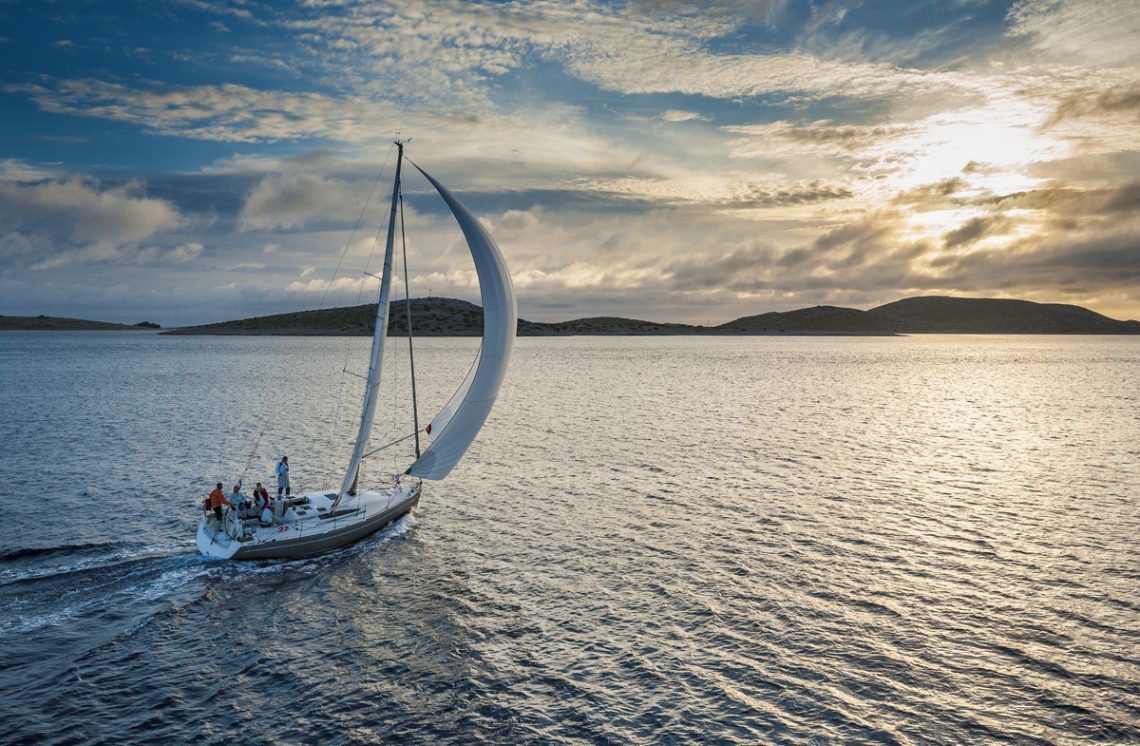
Sailing in light wind: 8 tips to maintain speed
On sailing trips, speed is usually not a primary concern. The atmosphere is relaxed, the crew is on vacation, and the quality of time spent onboard, including stops in bays, matters more than the boat’s performance. Skillfully handling a cabin cruiser in all conditions offers great satisfaction to those at the helm and always presents an exciting challenge against nature.
The skills and sensitivity of a good helmsman are especially apparent when sailing in light winds, say under 8 knots. In these conditions, optimizing the boat’s performance and keeping it moving is not easy and can test the patience of beginners. Effectively using any breeze requires a good deal of skill, concentration, and practice. Here are some tips and techniques to try the next time you find yourself sailing in a light breeze during your cruises.
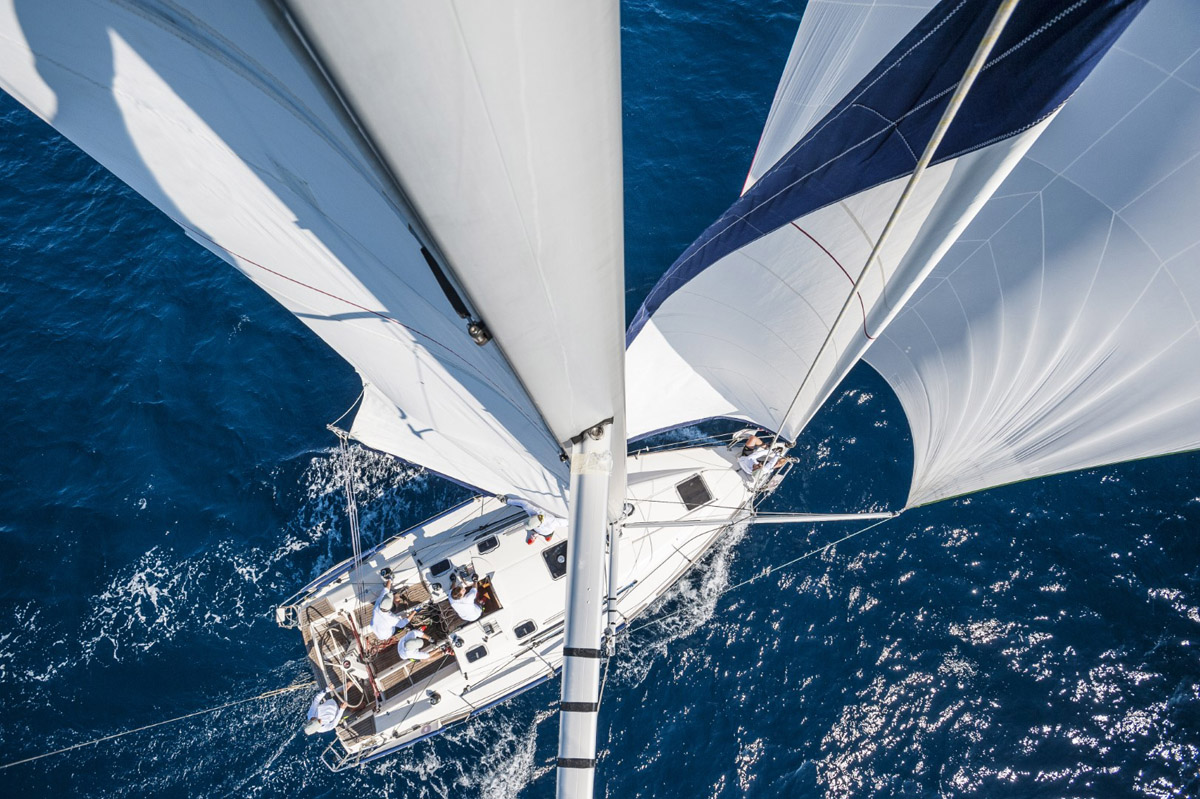
Adjusting sails for light wind
A rounded and wide sail shape is more efficient in harnessing the available wind compared to a narrow and flat sail. Although the aim in light wind is to encourage a “belly” in the sail shape, too much bagginess will increase turbulence and reduce the driving force. Tension the mainsail halyards just enough to eliminate horizontal wrinkles. Loosening the mainsail will also help deepen the sail shape.
Avoid over-tightening both the jib and mainsail. Remember the old adage: “When in doubt, let it out.” Ease the sheet until the sail’s leech flutters, then trim it to the point where the fluttering stops. Make small, regular adjustments to the sails (a few centimeters at a time), as light wind takes longer to reattach to the sails.
Be aware of the “wind shear” phenomenon, where the wind speed and direction vary at different altitudes, even with very small altitude differences, such as between the masthead and the deck of the boat. With light wind, the twist in wind direction between the masthead and deck level tends to be more pronounced due to apparent wind effect. Increasing twist in the upper part of the sail helps compensate for “wind shear” and improves the trim throughout the sail’s height.
Apparent wind is our ally
When sailing in light winds, the forward momentum of the vessel provides more energy to the sails than the actual wind speed alone. We must do our best to maintain any momentum we can achieve to fully benefit from the apparent wind.
Sailing downwind in light air can be an even greater challenge, as you lose the advantage of the apparent wind. If you need to sail downwind, you’ll get better results with a broad reach. There’s a maneuver that can help make progress downwind: steer slowly to a beam reach to build momentum, then gradually bear away from the wind. If speed decreases again, repeat the maneuver.
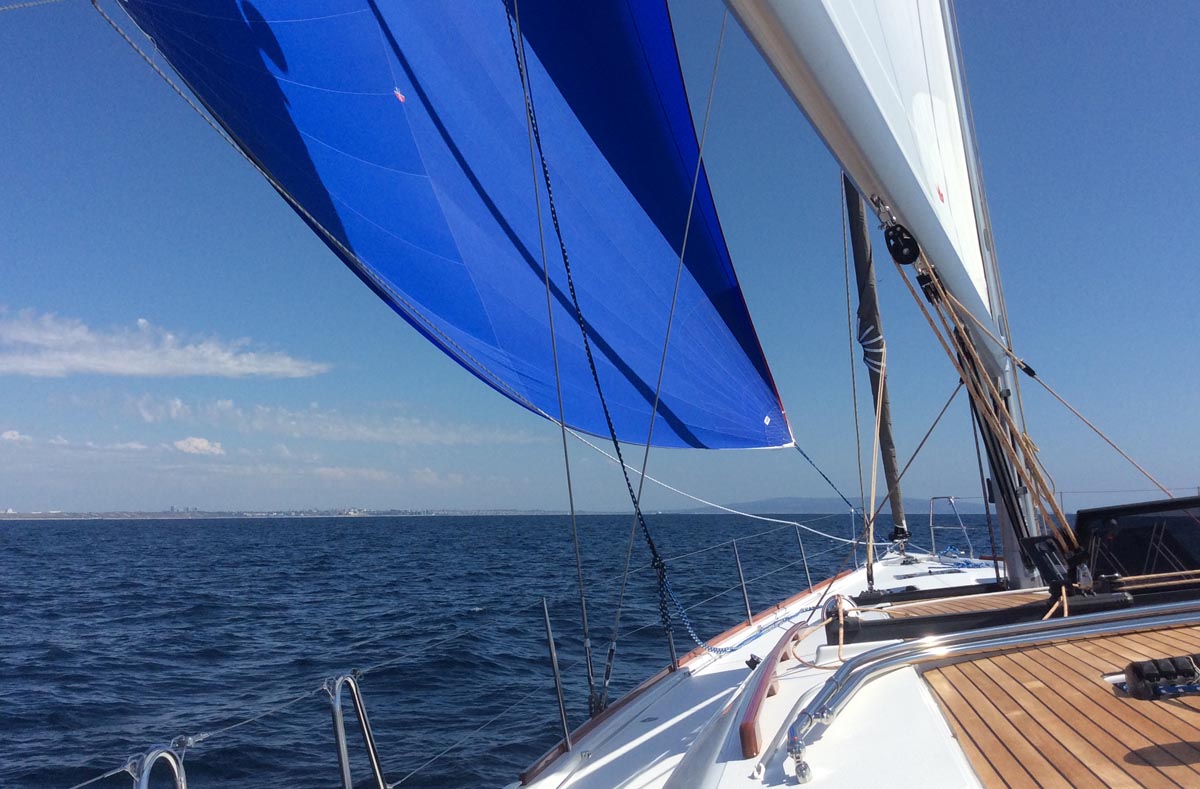
Navigating by water ripples
Watch the water for wind signals and be ready to utilize any gust that comes your way to help gain momentum. Ripples with a slightly darker color on the water indicate an approaching gust of wind. The ripples also show the direction from which the gust is coming. Before the gust reaches your boat, gently steer in the direction that will allow you to make the most of the existing sail trim when the gust arrives.
Riding tidal currents
Tidal currents near the shore tend to be slower than those in deeper waters. When the tidal current opposes the direction you wish to go, sail as close to the shore as possible. If you intend to follow the direction of the tidal current, your momentum will be aided by sailing in deeper waters, where tidal currents are faster, but be mindful of marine traffic. Start the engine if you are in a shipping lane when a large ship is approaching. Do everything necessary to quickly move away.
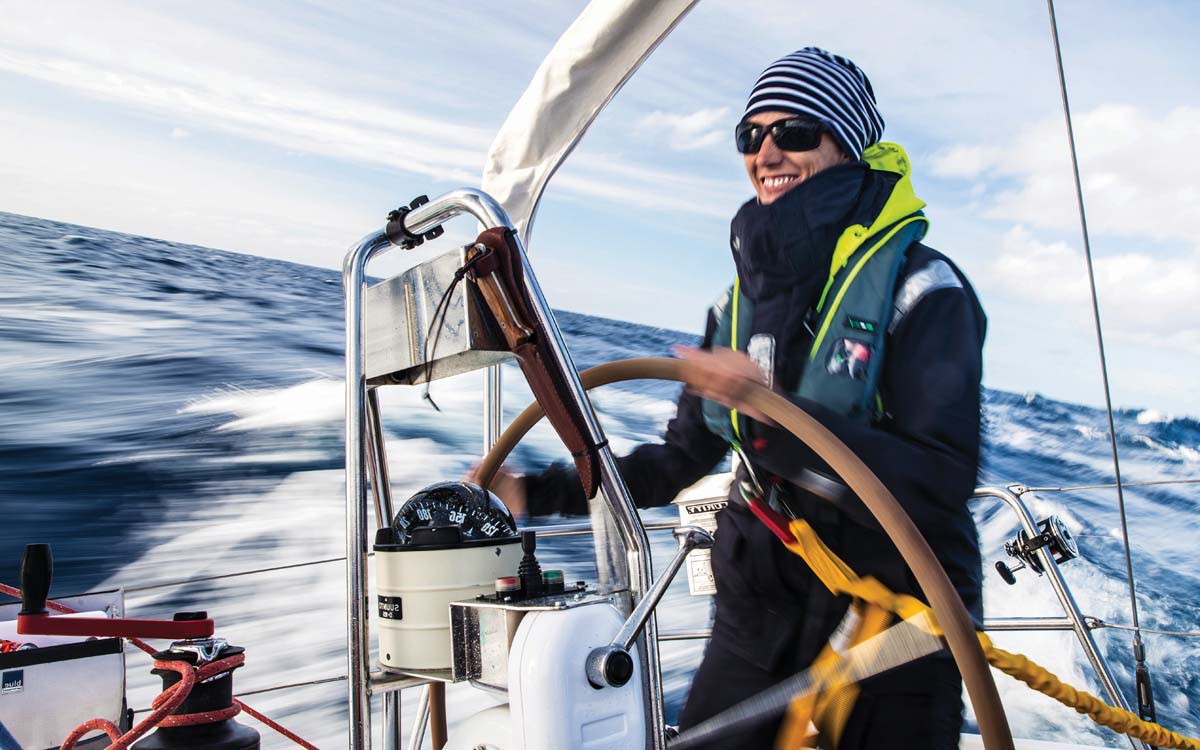
Steady rudder in light breezes
In light breezes, a skilled helmsman knows that it’s crucial to move the rudder as little as possible and minimize course corrections. Any rudder movement acts as a brake on speed, and when the boat is already struggling to move, it’s essential not to slow it down further. Oversteering or understeering also increases aerodynamic resistance, consequently slowing down the vessel.
Keeping the rudder as steady as possible requires concentration and sensitivity to the wind’s direction. The skipper’s gaze should remain fixed on the telltales of the jib, which are valuable indicators for the correct sail adjustment, and should not be distracted by anything else.
A “broader” close-hauled course
With light wind on a close-hauled course, every second spent with the boat too much into the wind can be costly. When the bow is near the wind’s direction, the boat quickly loses speed, and regaining it is a slower and more laborious process. If you need to beat upwind during a cruise with only a light breeze, prioritize the boat’s speed over the angle to the wind. It’s better to keep a slightly broader close-hauled course and not force the boat too hard upwind, rather than risk losing several tenths, or worse, knots of speed.
The helmsman should pay more attention to the jib’s telltales than to the sail’s trim. Avoid having the telltales pointing upwards and watch if the sail collapses near the forestay. This is a sign that the chosen angle to the wind is too tight.
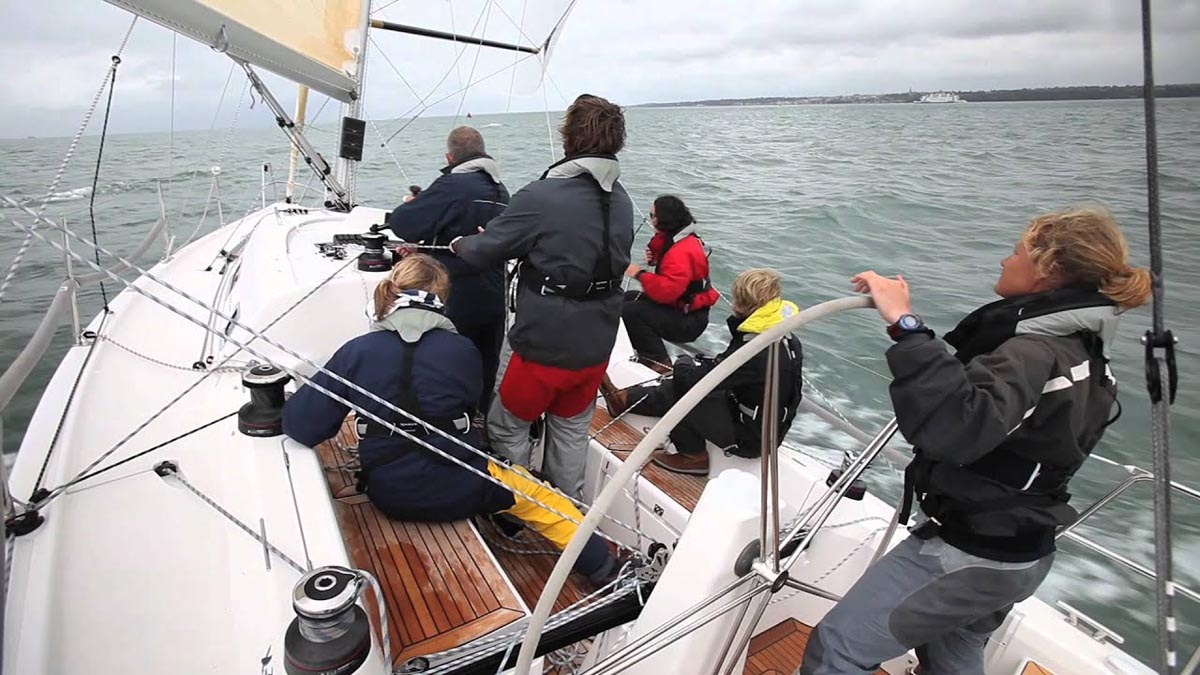
Acceleration and weight distribution onboard
The wake of speedboats, maxi RIBs, ferries, and large ships speeding nearby can interfere with your boat’s acceleration. This is also because the rocking on the waves “shakes” the wind out of the sails. If possible, avoid high-traffic marine areas. The same applies to sudden shifts in weight onboard. Crew members should be positioned leeward, from the middle of the boat forward, to try to give a slight heel to the hull and reduce the wetted surface. The helmsman must “feel” this heel and adjust accordingly. Whenever this heel reduces, it means the boat is too close to the wind, and the pressure on the sails is further decreasing.
On smaller and lighter boats, which tend to sway with crew movement, ask crew members to move slowly when shifting from one side of the boat to the other. In addition to reducing aerodynamic drag aft, the heel induced by their weight helps improve sail shape by keeping them leeward.
Knowing where to find the wind
Before setting sail, check weather forecasts and meteorological bulletins to know the expected wind direction. Keep in mind that land masses create a wind shadow, an area of very light or no wind on the leeward side of the land mass. Watch the water to follow wind signals and avoid wind shadows when sailing in these areas.
You May Also Like

Leeward Islands: the tropical dream of French Polynesia
29/11/2023
Sailing along the northern coast of Corfu, an island that celebrates life
22/01/2025



